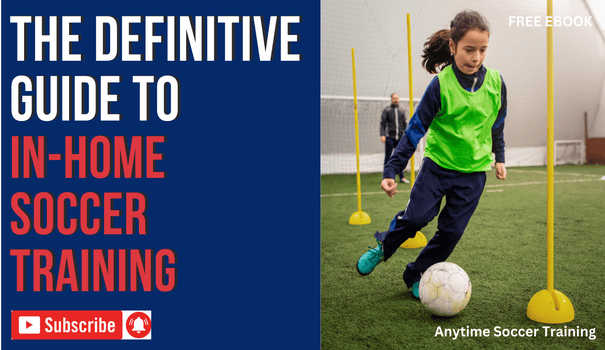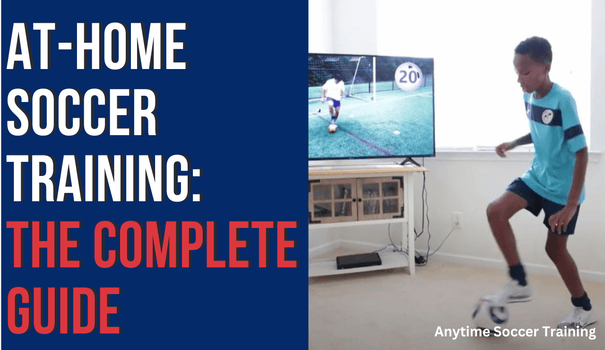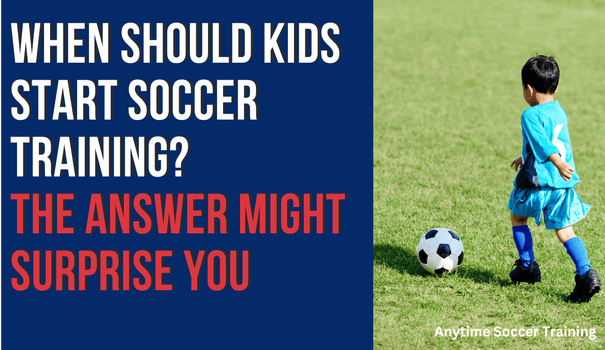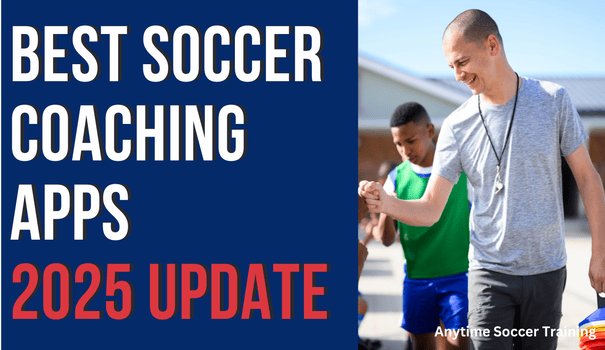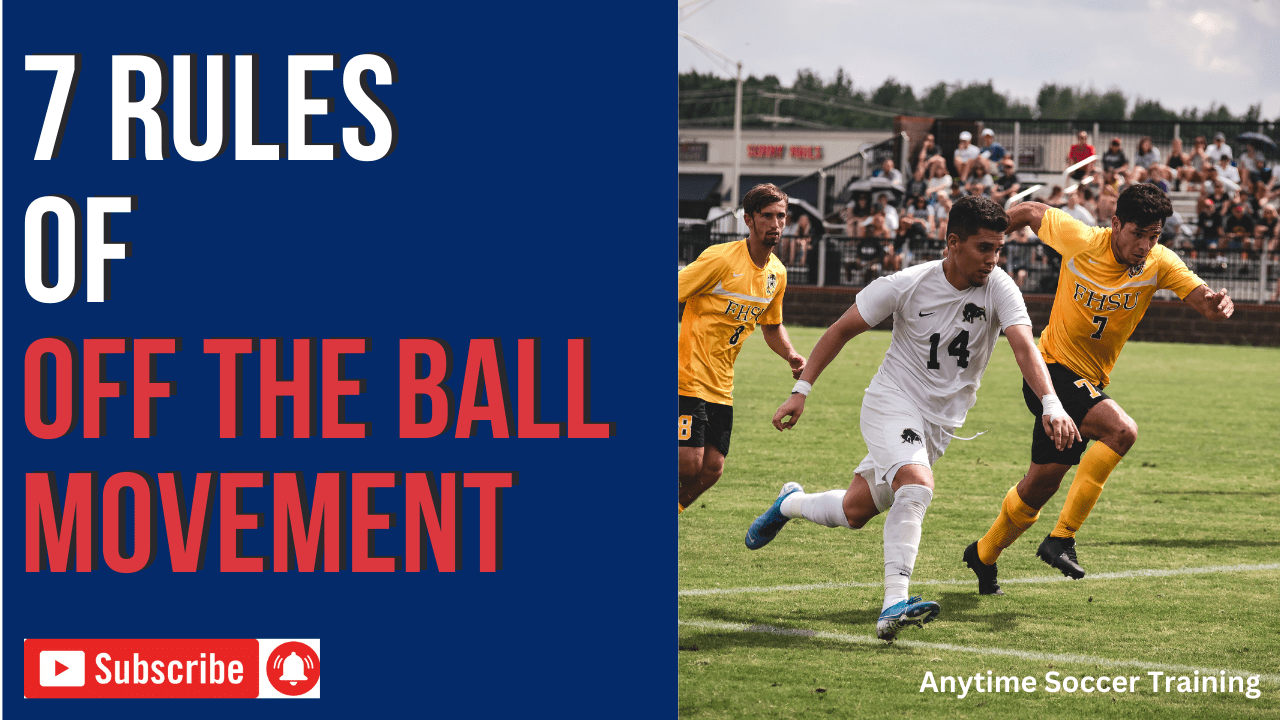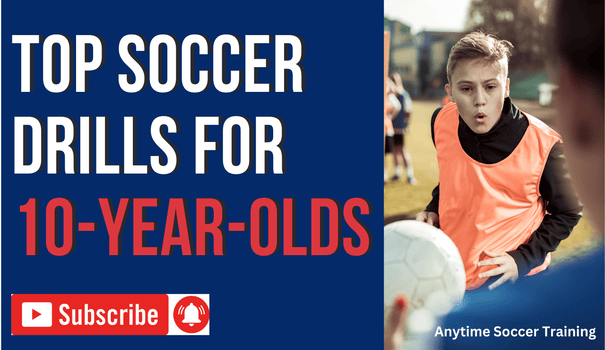Why Off-the-Ball Movement Matters in Youth Soccer (and How Parents Can Reinforce It at Home)
One of the biggest surprises for me as a soccer dad was realizing that most of the game happens without the ball. A 90-minute match might sound like endless touches, but studies show the average player only controls the ball for less than one minute.
That means success in soccer depends heavily on movement without the ball. The ability to create space, time runs, and confuse defenders often separates good players from great ones.
Related: 5 Best Soccer Rebounders
Think of Thomas Müller, known as the “Raumdeuter” or “space interpreter,” who has built his career on finding gaps defenders can’t track. Or Cristiano Ronaldo, who times his runs into the box so perfectly that defenders are often caught flat-footed.
These examples show kids that mastering off-the-ball movement is just as important as flashy dribbling or juggling.
1. Stay in the Defender’s Blind Zone
Thomas Müller is the master of slipping into areas where defenders lose track of him, creating chances by simply being unseen. Young players should learn how to position themselves so that defenders cannot see them and the ball at the same time.
Practice Tip: Set up a cone or sibling as the “defender.” Have your child practice moving behind them while keeping the ball in sight, then sprint into space to receive a pass.
2. Position Yourself Between Defenders
Lionel Messi often positions himself in the small pockets between defenders, making it nearly impossible to mark him. This forces hesitation and opens up opportunities for teammates to find him with passes.
Practice Tip: Place two cones a few feet apart to act as defenders. Pass the ball to your child and encourage them to constantly adjust so they’re standing in the gap before receiving the ball.
3. Keep Distance from the Teammate with the Ball
Kevin De Bruyne excels at finding the perfect distance—close enough to support but far enough to stretch defenders. His movement keeps attacking options open and passing lanes clear.
Practice Tip: Play a simple 2v1 in the backyard. Your child should practice shifting left, right, closer, or further until they find a position that creates an open passing lane.
4. Arrive Late to Beat the Defender
Frank Lampard built his legacy on late runs into the box, timing his arrival perfectly to score goals. Arriving too early allows defenders to prepare, while arriving late catches them off guard.
Practice Tip: Toss or roll a ball into space and cue your child to sprint only when you clap or call “go.” This teaches them to time their runs instead of rushing too early.
5. Scan for Open Space Constantly
Sergio Busquets is a perfect example of a player who scans over his shoulder before every touch. By constantly scanning, he always knows where to move and where to pass under pressure.
Practice Tip: While your child dribbles, stand behind them and hold up fingers. They must scan, call out the number, and then prepare to receive your pass. This creates the habit of scanning before receiving.
6. Watch the Opponent’s Eyes
Neymar often reads defenders’ eyes to anticipate their next move, then uses fakes and quick changes of direction to exploit them. Defenders give away more than they realize with a glance.
Practice Tip: Play a “mirror tag” game. You shift left or right while glancing in one direction. Your child must move the opposite way to learn how to react quickly and read intentions.
7. Exploit the Defender’s Body Position
Kylian Mbappé is devastating against defenders who are flat-footed. One explosive step is often enough for him to leave his opponent behind.
Practice Tip: Act as a stationary defender and pause in place. The moment you stop, your child should accelerate past you with their first step, simulating the burst needed to exploit poor defender positioning.
Why These Rules Matter for Kids
By learning these seven rules, kids don’t just get more touches—they create better opportunities to use them. They grow more confident because they’re always available for the pass, and coaches notice players who move intelligently just as much as those with flashy skills.
The best part is that these lessons don’t require expensive trainers. With just a ball, a parent, and a few cones, kids can model their habits after the pros.
Recommended Training Equipment
To make off-the-ball training even more effective at home, here are some essentials you can add to your setup:
- Training Cones: Perfect for marking blind zones, defensive lines, and scanning drills. Buy Now
- Portable Soccer Rebounder: Great for practicing timing runs, quick passes, and reaction drills when a partner isn’t available. Buy Now
- Agility Ladder: Helps kids improve footwork, balance, and explosive first steps—crucial for exploiting defenders who are flat-footed. Buy Now
- Small Goals: Encourage finishing after timed runs and help create game-like scenarios in the backyard. Buy Now
- Training Bibs: Useful for parent-kid or sibling drills where one acts as a defender and the other practices movement rules. Buy Now
Final Thoughts + Free Resource
Off-the-ball movement is one of the most overlooked skills in youth soccer, but it’s also one of the easiest to train at home.
By practicing these rules and studying players like Müller, Messi, De Bruyne, Lampard, Busquets, Neymar, and Mbappé, kids can gain an edge that sets them apart.
If you want structured guidance, Anytime Soccer Training is the only app that allows coaches to assign soccer homework and helps kids master both ball skills and off-the-ball intelligence.
Take the FREE 7-Day Ball Mastery Challenge and give your child the confidence to move, think, and play like the pros.
